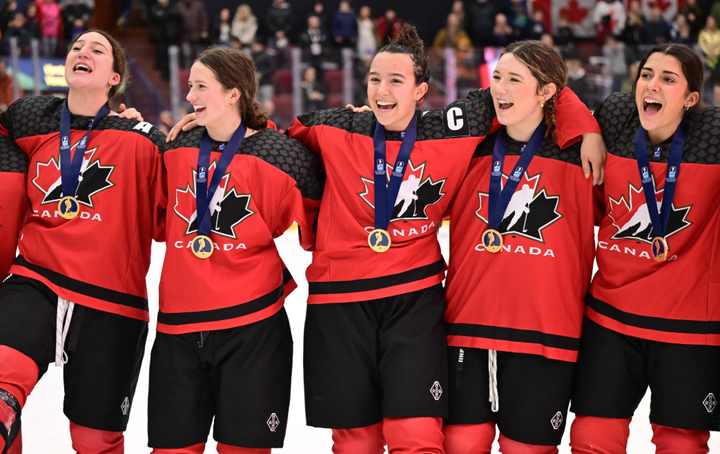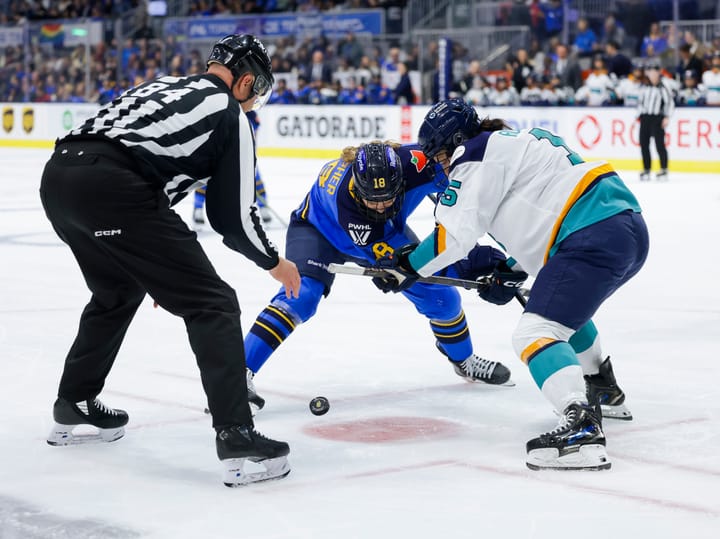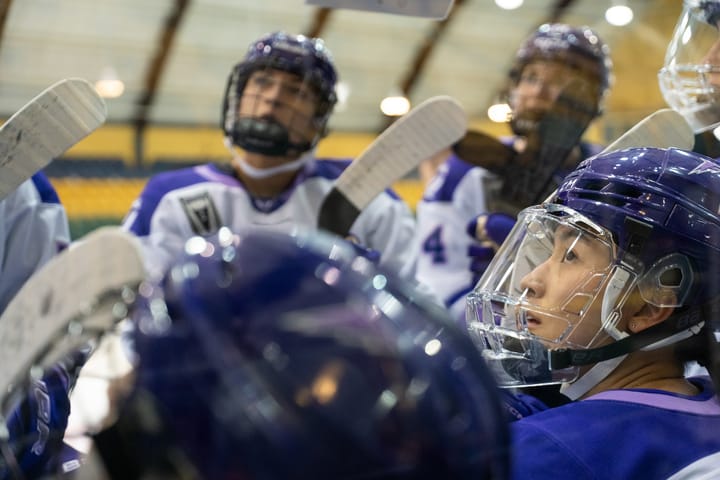NCAA Year in Review: Minnesota-Duluth and Ohio State
The best of the rest in the west
As the NCAA women’s hockey season winds down, writers Gabriella Fundaro and William Whyte are taking an in-depth look at how each team has shaped up in 2018-19. It’s time to look at the two WCHA teams that were in the national conversation all year but didn’t quite manage to qualify for the tournament.
Minnesota-Duluth
Gabriella: The Bulldogs were something of a puzzle this season, no? They started off the year on quite the high, sweeping highly-touted Boston College at home, and from there, it was seemingly all down, then up, then down again. Example: they swept a ranked Ohio State team one weekend in January, then split with an offensively hurting Quinnipiac team the next. With 2.63 goals per game, they ranked 13th in the country, and their top-nine forwards were always exciting to watch. A young defensive corps and some uncharacteristically average goaltending from junior Maddie Rooney ultimately did them in, though. When they last made the NCAA Tournament, Rooney was a huge part of their success. Is it fair to say that regression from her made the difference this year?
William: Maddie Rooney seemed to come out of nowhere in 2016-17. She’d been on the USA Hockey radar but never made the US U18 team, and as a freshman at Minnesota-Duluth had split time with senior Kayla Black and came out with an undistinguished .899 save percentage. Her sophomore year was a revelation. She ended on a .942 save percentage, fourth-best in Division 1 but — crucially — best out of all American-born goalies; throughout the WCHA tournament, she had a save percentage of .958; she made 107 saves across the two games of the finals; she backstopped Minnesota-Duluth to home ice in the NCAA tournament for the first time since 2010; and a national team call-up and Olympic gold followed.
Should we have expected a regression all the way from 62 goals against in Rooney’s sophomore year to 96 goals against this year? It was certainly a surprise. Maybe the D got complacent at the start of the year and couldn’t work out how to regroup when they realized that Rooney couldn’t bail them out the way they’d been expecting. But the big difference for UMD compared to two years ago is probably the huge senior class they graduated in 2017. SDHL runner up Lara Stalder, Vanke Rays pioneer Ashleigh Brykaliuk, Isobel Cup champion Katie McGovern, Olympic gold medalist Sydney Morin and Whale standout Kateřina Mrázová accounted for an astonishing 192 of the 296 points Minnesota-Duluth scored that season. With that much talent skating out, it makes things much easier for your goalie no matter what her individual talent level. Rather than wondering why UMD isn’t where we were expecting, we should perhaps be amazed that they’ve weathered the storm of losing that group as well as they have.
If we look at UMD as a team in the middle of a large-scale rebuild, and if we take into account the fact that Minnesota and Wisconsin got national team players back, I think you can look on this year for UMD as a satisfactory step in the rebuild. Freshman Gabbie Hughes scored more points than Minnesota’s returning Olympian Kelly Pannek; Sophomore Naomi Rogge had two four-point games in a row against Ohio State; 178 of their 238 total points were scored by underclassmen. UMD maybe underperformed relative to our expectations this year, but maybe we had the wrong expectations. Next year they might be quietly dangerous.
Stick taps: Out of that exciting forward group, no player was more fun to follow than freshman forward Gabbie Hughes, who jumped onto the college scene with 19 goals, 18 assists, and 37 points to lead the Bulldogs in scoring. Even better for UMD going forward: they only lose three players to graduation, none of whom were impactful players on the scoresheet.
Losing an edge: That bizarre game in February when Rooney and Abbey Levy at Minnesota State both managed to let in five goals.
Alternative take: Here’s a good review of the season from the Duluth News Tribune.
Ohio State
Gabriella: The Buckeyes were looking to follow up a historic season for their program and get back into the NCAA Tournament for just the second time, but they came up a bit short of that goal. One of their biggest adjustments was in net, after standout goaltender Kassidy Sauvé transferred to Clarkson for her fourth year of eligibility (though her postgrad year academically). Rookie Andrea Brändli answered the bell, posting the fourth-best save percentage in the country at .939. Still, the Buckeyes didn’t quite measure up to where they were at least season. I think they’re a good team that showed they can beat anyone, but personally, I thought it was going to be a tall order for them to break into the WCHA’s top two in a non-Olympic year. Did you expect to see more out of Ohio State this year, or did you think this was about where they’d end up?
William: Last year, Ohio State went 2-2-0 against Wisconsin and 3-0-1 against Minnesota in the regular season. This year, they went 1-1-2 (two shootout wins) against Wisconsin and 1-3-0 against Minnesota. So the difference between last year’s 14-6-4 in conference and this year’s 12-10-2 is almost entirely explained by the different results against Minnesota. This seems to bear out Gabriella’s point about non-Olympic years being easier for the other teams, although it’s also true that we spent a lot of time this year wondering why Minnesota’s returning Olympians weren’t having a huge impact.
Overall, though, I think the Buckeyes were slightly behind where I expected. They graduated 58 of 296 points scored last year, well under a quarter; while Sauvé going to Clarkson was a big deal, they got a great performance out of Brändli in net, as noted. Their most dangerous player last year, Emma Maltais, was, if anything, even more dangerous this year, stepping up from 40 to 43 points. And Nadine Muzerall remains the most quotable coach in women’s college hockey.
Based on Muzerall’s comments (which you can watch postgame on the Buckeyes’ Twitter feed and which are always worth it), she felt that the team’s compete level this year was inconsistent compared to last year. When they do show up, they’re among the fastest and most aggressive teams in the country, but they simply didn’t show up for every game. I’m reminded a bit of Colgate’s drop off from last year to this year -- for both Colgate and Ohio State, last year things converged in such a way that the team was dripping with self-belief in a way that maybe was hard to sustain this year.
Or maybe it’s just that Wisconsin and Minnesota got better.
Stick taps: Ohio State went on the road for the last weekend of the regular season and played spoiler to Wisconsin’s hopes of taking home the WCHA regular season championship, upsetting the Badgers in back-to-back shootout wins. That’s a fun way to wrap things up if you’re a conference rival. Also, a stick tap for pretty much anything Coach Nadine Muzerall says.
Bonus stick taps: The black-on-black jerseys were some next-level trolling.
Losing an edge: The Buckeyes were swept on the road back in November by a Beavers squad that had struggled terribly at the start of the year.
Good luck looking at the numbers on Ohio State's black sweaters. pic.twitter.com/froZADdaLK
— Nate Wells (@gopherstate) October 20, 2018





Comments ()